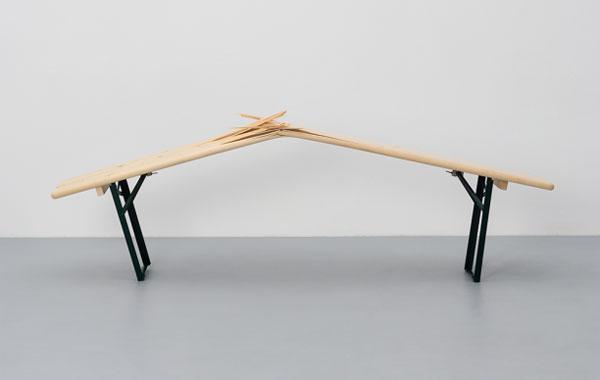Anna-Sophie Berger. Places to fight and to make up

Anna-Sophie Berger, Agony half-hourly, 2016
Anna-Sophie Berger (born 1989 in Vienna) is the first prizewinner of the Kapsch Contemporary Art Prize, which was instated jointly by the Kapsch Group and mumok in 2016 to promote young artists living mainly in Austria. The prize comes with 5,000 euro and a solo exhibition at mumok, including a publication. In addition a work by the prizewinning artist is purchased by the Kapsch Group for the mumok collection.
In her solo exhibition Places to fight and to make up the artist reflects on questions regarding communication. The exhibited works focus on the influence of modern mass media on our society’s capability to engage with dialogue and discourse as well as on our use and preservation of objects. For Berger objects have different capacities, which they display depending on the environment they are inserted to. The artist is concerned with the sociological component of the object – in particular with its specific handling. The object is not to be seen as a discrete entity but rather as a part of human life. This perspective allows the artist to explore the formal and functional properties of objects in transient environments. It enables her to make transformation visible, closely intertwined with the emotions and intentions of the perceiving subject.
The site-specific installation, made exclusively for mumok, features at its center a pair of concrete parabolic reflectors. These structures were taken from a common playground in the third communal district of Vienna and then transferred to the museum – an environment equally intended for public use though with completely different parameters. What is meant for the amusement of children also playfully promotes communication as a sensory experience. The installation is not deploring changes in our communication behavior, but rather acts as a reference to environments where discourse is possible. Depending on its location, the object gains a specific form of re-evaluation. The structures previously disregarded as dated playground objects covered in graffiti become a designated artwork in a museum only to return after the exhibition.
Curated by Marianne Dobner

